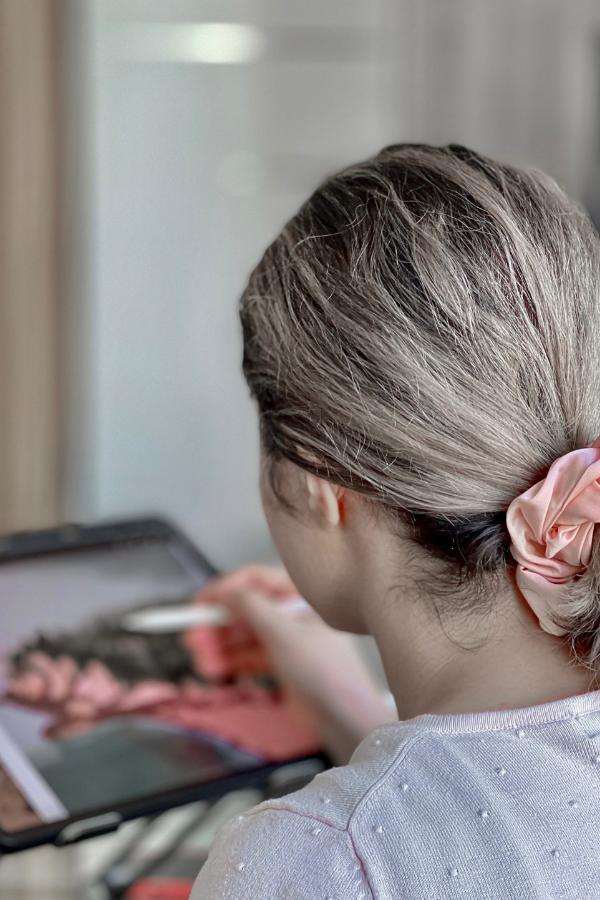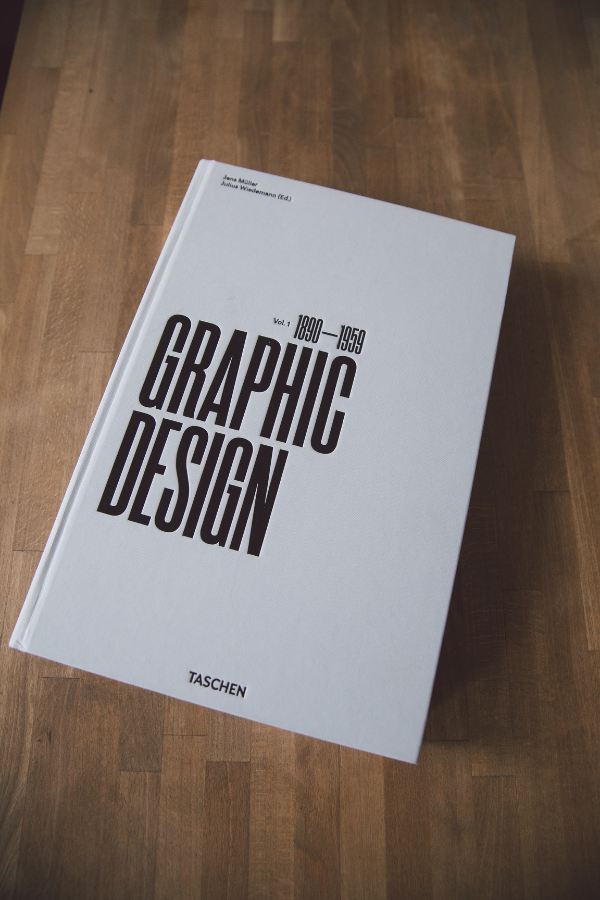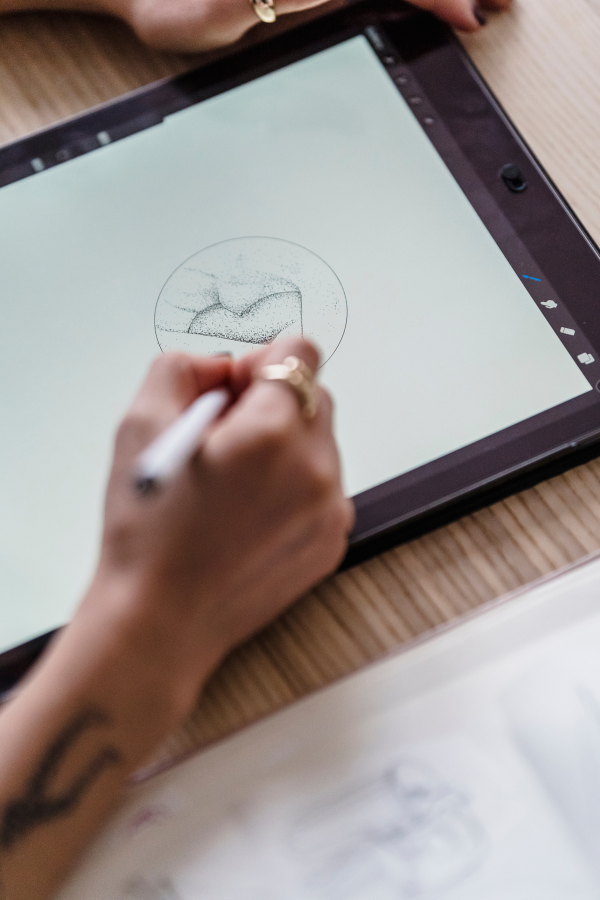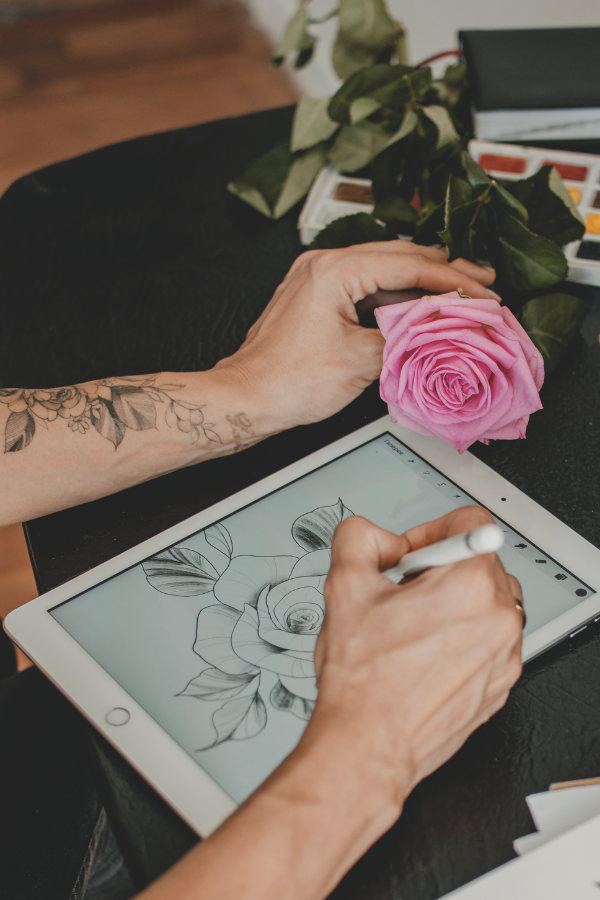

The Mid-Career Switch: How to Become a Graphic Designer
Summary
Becoming a graphic designer combines acquiring technical skills, nurturing creativity, and building professional experience. Start by learning the fundamental principles of design and mastering essential software tools like Adobe Photoshop and Illustrator. Practice regularly to refine your skills and develop a unique style. Building a strong portfolio is crucial for showcasing your work and attracting potential employers or clients. Networking and staying updated with industry trends are also vital for career growth. Success in graphic design requires a blend of artistic talent, technical proficiency, and continuous learning.
Reflection Questions
- What aspect of graphic design are you most passionate about, and how can you focus your learning and projects to reflect this interest?
- Reflect on a piece of graphic design work you admire. What elements make it stand out to you, and how can you incorporate similar qualities into your own work?
- Considering the rapid evolution of design tools and trends, how do you plan to stay informed and continuously develop your skills in the years to come?
Journal Prompt
Think about where you currently are in your journey to becoming a graphic designer. Describe the skills you’ve acquired, the challenges you’ve faced, and the achievements you’re proud of. Then, envision where you want to be in five years. What kind of projects do you want to work on? What skills do you need to develop to get there? Write a detailed plan outlining the steps you’ll take to achieve these goals, considering the advice from the article on becoming a graphic designer.
Are you ready to dive headfirst into the fun and fulfilling world of graphic design? If you’ve been eyeing that design software with longing or doodling in the margins of your notebooks, it might be time to turn your passion into a profession.
In recent years, there’s been a noticeable surge in interest in graphic design careers, with more and more individuals looking to pivot into this dynamic field. But for many graphic designers, especially women, making a mid-career switch comes with its own set of unique considerations and challenges. In this article, we’ll give you an introduction to what to expect in the journey of how to become a graphic designer.
Read on to learn more about what it takes to snag one of the many graphic design positions available today.
Understanding the Field of Graphic Design


Graphic design is a multifaceted field that encompasses the creation of visual content using various design elements such as typography, imagery, color, and layout. Graphic designers work across a spectrum of mediums, including print, digital, and multimedia, crafting everything from logos and branding materials to website layouts and marketing collateral.
Design plays a pivotal role in shaping user experiences and communicating messages effectively in today’s digital world. Beyond its practical applications, graphic design offers abundant opportunities for creative expression and career satisfaction, allowing individuals to translate their ideas and concepts into visually compelling narratives.
Whether pursuing a traditional graphic design career path within a design agency or venturing into freelance work, graphic designers have the flexibility to specialize in areas such as web design, illustration, motion graphics, or user experience design.
Building a professional portfolio showcasing their skills and expertise is crucial for aspiring graphic designers. This helps them stand out in a competitive market. With the aid of computer software and a keen eye for aesthetics, individuals can create designs that captivate audiences and leave a lasting impression. Whether embarking on the journey to become a graphic designer specializing or seeking to expand their skill set, the field of graphic design offers boundless opportunities for those with a passion for creativity and visual storytelling.
Assessing Your Current Skills and Experience


When considering a transition to a career in graphic design, it’s essential to assess your current skill set and identify transferable abilities that can be applied to the field. Creativity, communication, and project management are just a few examples of skills that can seamlessly transition into graphic design careers. Creativity fuels the design process, allowing individuals to conceptualize and execute visually appealing solutions.
Effective communication skills are paramount for collaborating with clients and colleagues, understanding project requirements, and articulating design decisions. Additionally, project management skills aid in organizing tasks, meeting deadlines, and delivering quality work. Embracing a growth mindset is equally crucial, as it fosters a willingness to learn new skills and adapt to industry trends.
Whether through self-study, formal graphic design education, or mentorship, aspiring graphic designers should continually seek opportunities to enhance their technical skills and expand their knowledge of design principles and software tools. By leveraging their existing strengths and cultivating a mindset of lifelong learning, individuals can embark on a rewarding journey toward becoming a graphic designer or a freelance graphic designer.
Are You a Match? Essential Skills and Knowledge for Graphic Designers


If you’re considering a career in graphic design, it’s essential to assess whether you possess the foundational skills and knowledge required for success in this dynamic field. Understanding the principles of design, including composition, balance, and hierarchy, forms the backbone of graphic design practice.
Mastery of typography and color theory enables designers to effectively communicate ideas and evoke desired emotions through their creations. Additionally, proficiency in must-know software and tools such as Adobe Creative Suite and Sketch is essential for executing design projects efficiently and with precision.
While traditional art skills are valuable for conceptualizing ideas and creating initial sketches, digital proficiency is equally important in today’s digital landscape, where much of graphic design work is executed digitally. Whether you’re interested in pursuing a career in web design, branding, or illustration, possessing a blend of artistic creativity and technical expertise will set you apart in the competitive world of graphic design.
Fuel your creative fire & be a part of a supportive community that values how you love to live.
subscribe to our newsletter
*please check your Spam folder for the latest DesignDash Magazine issue immediately after subscription


Professions That Easily Transition to Graphic Design
Transitioning to a career in graphic design can be a seamless move for professionals from various backgrounds, thanks to their transferable skills and knowledge. Marketing and advertising professionals, already versed in brand strategy and visual communication, possess insights into what attracts and resonates with audiences, making them well-suited for roles in creating compelling brand identity campaigns and marketing materials.
Web designers and developers, with their foundation in digital design principles, can broaden their skill set to encompass a wider range of graphic design work, including website graphics, user interface design, and digital marketing assets. Photographers, with their innate sense of composition and visual storytelling, can leverage these skills to create impactful visual images for graphic design projects. Graphic artists and illustrators, equipped with strong foundational art skills and creativity, can apply their talents to commercial design applications, such as creating illustrations for books, magazines, or advertisements.
Architects, with their understanding of aesthetics, function, and proficiency in software like CAD, are well-positioned to transition to graphic design, particularly in areas such as environmental graphics or user interface design. Regardless of their background knowledge or educational background, individuals with creative skills and a passion for visual expression can find fulfilling career paths in graphic design, contributing to shaping the company’s visual presence and visual style through their expertise in design principles and digital art tools like Adobe Photoshop. Similarly, art directors could enjoy easy transitions to graphic design jobs should they so choose.
Everything You Need to Know About Making the Mid-Career Switch to Graphic Design
Education and Training Options


When exploring education and training options to become a graphic designer, individuals have a variety of paths to consider, each offering its own benefits and opportunities for skill development. Self-taught routes provide flexibility and autonomy, allowing individuals to learn at their own pace through online tutorials, books, and practice projects.
Online courses offered by platforms like Coursera, LinkedIn Learning, and Behance provide structured learning experiences taught by industry professionals, covering topics ranging from basic design principles to advanced software techniques. A formal graphic design program, such as bachelor’s or associate degrees in graphic design, offer comprehensive curricula that delve deep into design theory, technical skills, and portfolio development. Certification programs provide graphic design students with specialized training in specific areas of graphic design, enhancing expertise in fields like UX/UI design, web development, or digital illustration.
Reputable resources and platforms for honing your graphic design skills include Coursera, which offers courses from top universities and industry experts, LinkedIn Learning with its vast library of design courses taught by professionals, and Behance, a platform for showcasing portfolios and discovering inspiration from creatives worldwide.
Regardless of the educational path chosen, hands-on projects are invaluable for honing skills and building a strong portfolio. Aspiring graphic designers should actively seek opportunities to work on multiple projects, whether through freelance gigs, internships, or personal passion projects. This practical experience not only demonstrates proficiency in key skills but also showcases the ability to apply design principles to real-world scenarios.
Building a Portfolio


Building a compelling graphic design portfolio is essential for showcasing your skills, versatility, and potential to prospective employers or clients. To create a standout portfolio, start by selecting your best work that demonstrates a range of styles, techniques, and project types. Include projects that highlight your ability to solve design problems effectively and communicate ideas visually. Organize your portfolio in a clean and visually appealing format, with clear labels and descriptions for each project to provide context and insight into your process and thinking.
When starting from scratch, consider undertaking personal projects or volunteering your design services to build your portfolio. Personal projects allow you to explore your interests and experiment with different styles and mediums without the constraints of client requirements. Volunteer work, such as designing promotional materials for local nonprofits or community events, not only provides valuable real-world experience but also demonstrates your commitment to using your skills for social good.
Gaining Experience and Networking


Gaining practical experience is crucial for aspiring graphic designers, and there are several avenues to explore, including internships, freelancing, and collaborative projects. Internships provide valuable hands-on experience in a professional setting, allowing individuals to apply their skills and gain insight into the day-to-day responsibilities of a graphic designer. Many companies offer internships to students or recent graduates, providing an opportunity to learn from experienced professionals and build a network of contacts within the industry.
Freelancing is another excellent way to gain experience and build a portfolio while also earning income. Freelancers can take on a variety of projects for clients ranging from small businesses to large corporations, working on everything from branding and marketing materials to website design and product packaging. Collaborative projects, whether with classmates, colleagues, or other creatives, offer opportunities to collaborate, share ideas, and learn from one another’s strengths and perspectives.
Networking within the design community is essential for building connections, finding mentorship opportunities, and discovering new job opportunities. Attend industry events, workshops, and conferences to meet peers, mentors, and industry professionals. Join online communities and forums to connect with designers from around the world, share work, and seek advice and feedback. Building relationships with other designers can lead to valuable opportunities for collaboration, referrals, and career advancement.
Balancing Transition Challenges


Transitioning into a new career, especially one as dynamic and competitive as graphic design can present various challenges, both practical and emotional. Balancing these challenges while juggling personal responsibilities and maintaining financial stability requires careful planning and resilience.
Firstly, it’s essential to set realistic expectations and goals for the transition period. Understand that building a successful career in graphic design takes time and effort, and setbacks are inevitable along the way. Develop a clear plan with actionable steps for gaining experience, building a portfolio, and networking within the industry.
Managing personal responsibilities while transitioning careers may require making sacrifices and prioritizing tasks. Communicate openly with family and friends about your career goals and seek their support and understanding during this period of change. Consider adjusting your schedule or seeking assistance with household tasks to free up time for pursuing your career aspirations.
Financial stability is a common concern during career transitions. Explore opportunities for part-time or freelance work in graphic design while transitioning, allowing you to gain experience and income simultaneously. Budget carefully and consider any financial resources or support systems available to you, such as savings, loans, or grants
Emotionally, navigating a career change can be challenging, especially if you’re grappling with imposter syndrome or self-doubt. Remember that it’s normal to feel uncertain or overwhelmed when embarking on something new. Practice self-care techniques such as mindfulness, exercise, and seeking support from friends, family, or a therapist. Surround yourself with positive influences and celebrate small victories along the way to boost your confidence and motivation.
Final Thoughts


The road to becoming a proficient graphic designer may twist and turn, but staying committed to honing your craft will ultimately lead to success. Every stroke of the pen, every click of the mouse, and every design iteration contributes to your evolution as a designer.
And let’s not forget about passion. It’s the fuel that keeps the creative fire burning bright. When you’re passionate about graphic design, the long hours and hard work become the labors of love. Your enthusiasm will shine through in every project, captivating audiences and leaving a lasting impression.
By Armela E.
Design Dash
Join us in designing a life you love.
-
What is Tax-Loss Harvesting, Is It Legal, and Does It Build Wealth?
A legal and simple strategy, tax-loss harvesting helps you offset capital gains and grow your wealth by reducing your tax bill.
-
DesignDash Guide: Create the Ultimate Fall Capsule Wardrobe
Build a fall capsule wardrobe to streamline your style, save time, and support sustainability with versatile, high-quality pieces.
-
How to Support a Partner Who is Making a Major Career Change
Wondering how to be a supportive partner during periods of transition? Here’s how to care for your partner (and yourself) during this time.
-
How Dollar-Cost Averaging Can Help You Navigate Market Volatility
Learn how dollar-cost averaging (DCA) can help you grow your wealth with consistency and ease, even during market volatility.
-
Fall Meal Prep: Maximizing Space for Soups, Stews, and Bakes
From decluttering your pantry to creating a cozy prep station you’ll actually enjoy, here’s how to organize your kitchen for fall meal prep.
-
Looking to the Future? Maybe It’s Time to Refresh Your Firm’s Brand
Your interior design business shouldn’t have to rebrand every time you open a new studio or add a new service, but it might need a brand refresh.








